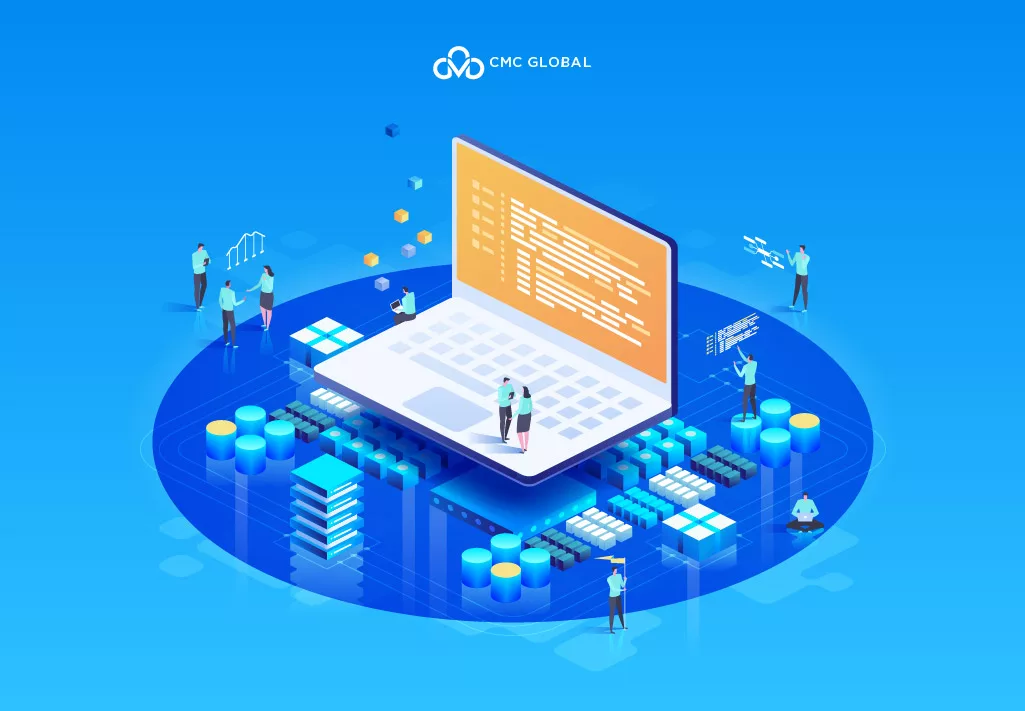IT development requires qualified specialists; sometimes, a lot of them. However, companies don’t always get the quantity or quality that they need to deliver their requirements, and that’s when staff augmentation can come in handy. So, what is staff augmentation, and how can you benefit from it? Let’s find out!
What is staff augmentation?

Staff augmentation is the practice of hiring personnel from third-party service providers. It is used by companies who, though having an in-house team, still lack specific expertise or technical skills.
In this model, companies bring in specialists from their vendors to join their teams for a certain period of time to deliver a set scope of work. During this time, the specialists function as in-house team members under the supervision of in-house managers.
How does staff augmentation benefit businesses?
Provide any tech stack. A big benefit of staff augmentation is that you can get access to any tech stack that you may have trouble recruiting for since most service providers keep personnel with diverse skills at their disposal. This is highly beneficial for projects that are in a crunch and have no time to recruit and train members.
Remove recruitment headaches. With staff augmentation, you can avoid the headaches of searching for and recruiting specialists, as you can get the right people via service providers at any time.
Reduce operational costs. You’ll need to pay for office space, equipment, taxes, employee benefits, etc., when you operate an in-house team. In contrast, the hired specialists operate at your service provider’s facilities, so you can save on these expenses.
Make continuous workflow possible. You can hire staff in different time zones, which can continue your workflow while you sleep, and you can go on with it when they do.
Scale personnel up or down easily. It’s much easier to ramp up or scale down a team with staff augmentation, thanks to the absence of strings attached to hires.
Cons of Staff Augmentation
Although staff augmentation can benefit your business in many ways, there are some downsides to it that you should pay attention to.
No institutional knowledge. Staff augmentation doesn’t work well for projects that require a depth of historical knowledge that outsiders don’t often have.
Team member’s departure. The specialists you hire from a vendor are just employees, and just like any employee, they can resign at any time. There’s a risk of waking up to the departure of someone who has got a good grasp of your project, and then you might have to replace that person with someone starting out fresh.
Miscommunication. There’s a risk of miscommunication when you work with overseas members who are not fluent in your native language. If you and your team speak English, find a vendor who can provide personnel with decent English to get around this problem; it’s the same for any language that you speak.
Information security. Staff augmentation means letting outsiders get access to your internal information, so you’ll need to find a reliable vendor, as well as come up with solutions to make sure that confidential data don’t get leaked.
Not a great choice for long-term ongoing projects. Staff augmentation is not a great choice here because the risk of team members’ departure hinders the accumulation of knowledge that is necessary for long-term projects to carry on and develop.
Complex collaboration. It can be difficult to coordinate the workflow between your in-house team and the hired one if you don’t have a solid framework.
Types of Staff Augmentation
There are three types of staff augmentation that are suitable for different types of projects.
| Type | When to choose | What it suits |
Commodity |
When you need workers to perform a task, but you don’t need a specific skill set. The task is often manual and repetitive, like the ones in the assembly line. | Basic manual work in warehouses, events, and factories. |
Skill-based |
You need a specific skill (such as translating or Excel), but the relative level of the skill is not important. | Clerical work, data inputting, transcription, basic copywriting. |
Highly-skilled |
You need a specific skill at an advanced level that can only be attainable via training and experience. | Software engineering, designing, contract law, sophisticated work. |
5 Staff Augmentation Best Practices

Keeping these practices in your toolkit will help avoid a bumpy journey when you need to rely on staff augmentation.
1. Make it clear about what you need
If you don’t even know what you need, then nobody can. So before you look for a vendor, make sure that you’ve figured out the goals of your project and what you’re going to need to achieve them. Vendors will need a very specific description of the type of personnel they’re looking for to be able to supply the right people from their resources.
2. Find the right staff augmentation vendor
As you’re bringing in staff from another company, you need to make sure that that company is reliable, competent, and can supply the right people that suit your project. So do your diligence carefully. No staff augmentation effort can succeed without working with the right vendor.
3. Be responsive and active in the process
Although staff augmentation vendors have sizable personnel at their disposal, it’s unlikely that all the people are equally good, which means you’ll have to compete with other companies who are looking for the same service for good people. Any delay may cost you the right people for your project, so be responsive and active in filtering, interviewing, and finalizing the people you want.
4. Test the water:
You can learn about the quality of the people you’re going to hire via tests and interviews, but you can only know whether they can deliver the work when they become involved in your project. To avoid the risk of going all-out with the wrong people (or vendor), you can get started with a smaller team and then go full-scale after you’ve found out that the people you’re working with are actually good.
5. Prepared for knowledge transfer:
The people you hire will join your project without zero knowledge about what was going on before, so make sure that you have a solid plan to equip the new members with the information they need to carry out your project. Keep in mind that these people will leave after your contract is made, so there’s no need to transfer more than what’s enough to get the job done.
Final words
Staff augmentation is a powerful model that can bring you a lot of benefits, as well as help you respond to unexpected needs or crises. Knowing when to use and when not to use it will allow you to be more efficient at project management and gain an edge over your competitors.
If your company is looking for staff augmentation services, we can help!
CMC Global is among the top 3 IT outsourcing services providers in Vietnam. We operate a large certified team of more than 1,500 developers, covering all tech stacks, and can supply you with the right team, regardless of size, at a very reasonable cost.
For further information, fill out the form below, and our technical team will get in touch shortly to advise!





